Introduction to Maritime Safety
Marine safety is a critical aspect of the maritime industry, which encompasses all activities related to the navigation and operation of ships and other vessels. The importance of safety in this field cannot be overstated, as the marine environment presents unique challenges and risks that can lead to serious accidents, injuries, and even loss of life.
The maritime industry is vital for global trade, transportation, and economic growth. Ships and vessels carry a significant portion of the world’s goods, including essential commodities like food, fuel, and raw materials. However, the nature of maritime operations involves navigating through diverse and often hazardous conditions, such as rough seas, extreme weather, and busy shipping lanes. These factors increase the risk of accidents, making safety a top priority.
Maritime accidents can have devastating consequences, not only for the crew and passengers onboard but also for the environment. Incidents like collisions, groundings, and oil spills can result in significant environmental damage, affecting marine ecosystems and coastal communities. Therefore, maintaining high safety standards is crucial for protecting human lives and preserving the marine environment.
Overview of International Maritime Safety Regulations and Standards
To ensure safety in the maritime industry, various international regulations and standards have been established. These regulations provide a framework for safe operations, covering aspects such as vessel design, equipment, crew training, and emergency procedures.
The International Maritime Organization (IMO) is a specialized agency of the United Nations responsible for regulating shipping. The IMO develops and maintains a comprehensive regulatory framework for international shipping, addressing safety, environmental concerns, legal matters, and efficiency. Key IMO conventions relevant to marine safety include the International Convention for the Safety of Life at Sea (SOLAS), the International Convention for the Prevention of Pollution from Ships (MARPOL), and the International Convention on Standards of Training, Certification, and Watchkeeping for Seafarers (STCW).
In addition to IMO conventions, there are other important regulations and guidelines that contribute to marine safety. These include the International Safety Management (ISM) Code, which provides an international standard for the safe management and operation of ships, and the International Ship and Port Facility Security (ISPS) Code, which addresses security-related matters.
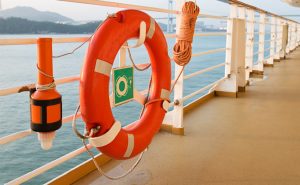
Personal Safety and Protective Equipment
Personal Protective Equipment (PPE) for Maritime Environments
In the maritime industry, the use of Personal Protective Equipment (PPE) is essential for ensuring the safety of individuals working in various shipboard and offshore environments. PPE is designed to protect workers from specific hazards that they may encounter during their duties at sea.
Types of PPE in Maritime Environments
- Helmets and Head Protection: To protect against head injuries from falling objects or collisions.
- Safety Goggles and Face Shields: For eye protection against splashes, debris, and intense light.
- Ear Protection: Essential in noisy environments, such as engine rooms, to prevent hearing damage.
- Life Jackets and Immersion Suits: For survival in case of falling overboard or abandoning ship.
- Protective Clothing: Including coveralls and specialized suits to protect against chemicals, fire, and extreme temperatures.
- Safety Gloves: To guard hands against cuts, burns, and exposure to harmful substances.
- Safety Footwear: Steel-toe boots or other durable shoes for foot protection and slip resistance.
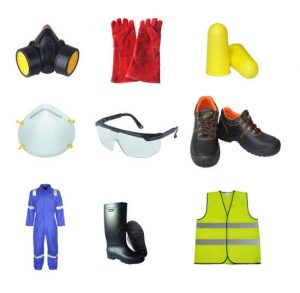
It’s crucial for maritime personnel to be trained in the proper use, maintenance, and inspection of PPE. Regular checks ensure that equipment is in good condition and fit for use, reducing the risk of accidents and injuries.
Personal safety onboard a ship involves more than just wearing the right equipment. It encompasses a range of practices and behaviors that contribute to a safe working environment.
Crew members must receive comprehensive safety training, including familiarization with the ship’s layout, safety procedures, and emergency protocols. Regular drills, such as fire and abandon ship drills, ensure preparedness for various emergencies.
Understanding and applying ergonomic principles can reduce the risk of strains and injuries. Safe work practices, such as proper lifting techniques and awareness of potential hazards, are vital for personal safety.
–
Emergency Procedures Overview
Types of Marine Emergencies
Marine emergencies are diverse and complex, presenting significant risks to the safety and well-being of those onboard and the vessel itself. These emergencies range from fires and explosions to man overboard incidents, collisions, severe weather conditions, medical crises, and hazardous material spills. Understanding the various types of marine emergencies is crucial for preparing appropriate response strategies and ensuring effective management of these situations. Marine emergencies encompass a range of situations that pose serious risks to the safety of the vessel and its crew. Understanding these types is critical for effective response and management. Common types include:
- Fires and Explosions: Due to the presence of flammable materials and confined spaces, fires are a major threat on ships.
- Man Overboard: Instances where crew members or passengers fall overboard.
- Collisions and Groundings: Accidents involving another vessel or running aground.
- Severe Weather Conditions: Extreme weather can endanger the ship and its crew.
- Medical Emergencies: Health-related crises that require immediate attention.
- Hazardous Material Spills: Incidents involving the release of dangerous substances.
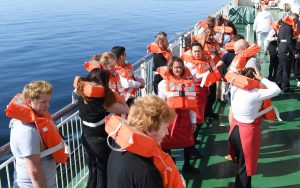
General Principles of Emergency Response
Responding effectively to marine emergencies requires adherence to a set of general principles that guide the actions and decisions of the crew. These principles include preparedness through regular drills and training, quick and accurate assessment of the emergency situation, clear and effective communication both within the ship and with external entities, coordinated efforts among the crew to utilize resources efficiently, and, when necessary, conducting orderly rescue and evacuation operations. These principles are fundamental to managing emergencies effectively and minimizing risks to life and property. A proper response to marine emergencies involves several key principles:
- Preparedness: Regular drills and training to ensure the crew is ready for various scenarios.
- Quick Assessment: Rapid evaluation of the situation to determine the best course of action.
- Effective Communication: Ensuring clear and prompt communication within the ship and with external entities.
- Coordinated Effort: A well-coordinated response utilizing the crew and resources efficiently.
- Rescue and Evacuation: When necessary, conducting orderly rescue and evacuation operations.
Fire Safety and Firefighting Techniques
Fire Prevention Strategies on Ships
Fire prevention on ships is a critical aspect of maritime safety, given the confined environment and limited escape routes. Implementing effective fire prevention strategies involves regular maintenance and inspections of electrical systems and machinery, safe handling and storage of flammable materials, and fostering a culture of safety through training and awareness. These measures are essential to significantly reduce the risk of fire outbreaks and ensure the safety of the vessel and its crew.
Regular Maintenance and Inspections
- Electrical Systems: Regular checks to prevent electrical fires due to short circuits or overheating.
- Machinery and Engine Room: Ensuring that machinery is properly maintained and free of oil leaks.
- Galley and Cooking Areas: Monitoring cooking equipment and enforcing safety practices in the kitchen.
Safe Handling and Storage of Flammable Materials
- Fuel and Chemicals: Storing fuels and chemicals in designated, secure areas away from ignition sources.
- Waste Management: Proper disposal of oily rags and combustible waste to prevent accidental fires.
Training and Awareness
- Fire Safety Drills: Regular drills to ensure crew familiarity with fire safety procedures.
- Education on Fire Risks: Informing the crew about common fire hazards and prevention techniques.

Basic Firefighting Equipment and Techniques
Equipping a ship with the right firefighting equipment and ensuring the crew is knowledgeable in basic firefighting techniques are key components of fire safety. This includes having various types of fire extinguishers, fire hoses, hydrants, and fixed fire suppression systems strategically placed around the ship. Additionally, crew members must be trained in identifying the type of fire, using extinguishers effectively, containment and control strategies, and coordinating firefighting efforts through teamwork and communication. These elements are vital for a prompt and efficient response to fires on ships.
Types of Firefighting Equipment
- Fire Extinguishers: Portable extinguishers suitable for different types of fires (e.g., water, foam, dry chemical, CO2).
- Fire Hoses and Hydrants: Strategically placed throughout the ship for quick deployment.
- Fixed Fire Suppression Systems: Automated systems in critical areas like the engine room and cargo holds.
- Breathing Apparatus: For entering smoke-filled spaces and protecting against smoke inhalation.
Firefighting Techniques
- Identifying the Type of Fire: Understanding the nature of the fire (e.g., electrical, oil, solid materials) to choose the appropriate extinguishing method.
- Using Extinguishers Effectively: Techniques for using different types of extinguishers.
- Containment and Control: Strategies for containing the fire and preventing its spread.
- Teamwork and Communication: Coordinating firefighting efforts among the crew for effective response.
Abandon Ship Procedures
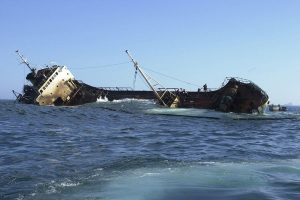
Lifeboats and Liferafts: Types and Operations
In the event of an emergency where abandoning ship becomes necessary, understanding the types and operations of lifeboats and liferafts is critical for ensuring the safety and survival of the crew and passengers. This includes knowledge of conventional and free-fall lifeboats, as well as inflatable liferafts, their launching procedures, boarding and seating arrangements, and the importance of regular drills for crew familiarization with these life-saving appliances.
Types of Lifeboats
- Conventional Lifeboats: Typically enclosed, with motor propulsion, and equipped with supplies for survival.
- Free-fall Lifeboats: Designed for rapid deployment, allowing the crew to escape quickly by launching from a ramp.
Liferafts
- Inflatable Liferafts: Deployed automatically or manually, these rafts provide temporary shelter and are equipped with survival kits.
Operations
- Launching Procedures: Training on how to safely launch lifeboats and liferafts.
- Boarding and Seating Arrangements: Ensuring efficient boarding and optimal distribution of passengers.
- Drills and Familiarization: Regular drills to familiarize the crew with the operation and handling of life-saving appliances.
Survival Techniques in the Open Sea
Once in the open sea, survivors must employ specific techniques to maximize their chances of survival and rescue. This involves the effective use of survival equipment available in lifeboats and liferafts, such as emergency supplies, signalling devices, and strategies for protection against the elements. Additionally, group survival strategies like staying together, conserving energy and water, and signalling for rescue are essential in enhancing visibility and improving the likelihood of being rescued.
Use of Survival Equipment
- Emergency Supplies: Familiarity with the contents of survival kits, including water, food rations, first aid supplies, and signalling devices.
- Protection from the Elements: Strategies to protect against sun exposure, dehydration, and hypothermia.
Group Survival Strategies
- Staying Together: Maximizing visibility and moral support by staying in a group.
- Keeping Calm and Conserving Energy: Minimizing physical exertion to conserve energy and water supplies.
- Signalling for Rescue: Using flares, mirrors, lights, and other signalling devices to attract attention.
Man Overboard and Search and Rescue Operations
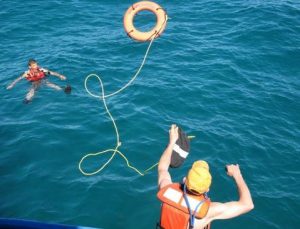
Man Overboard Procedures
A man-overboard situation is one of the most urgent emergencies on a ship, requiring swift and decisive action to ensure the rescue and safety of the individual overboard. The procedures include raising the alarm, performing specific manoeuvres to return to the person’s location, marking the location with life-saving equipment, and maintaining constant visual contact. Rescue operations involve the use of the ship’s equipment and providing immediate medical care after recovery.
Immediate Actions:
- Raise the Alarm: Alert the crew and bridge immediately upon noticing a person overboard.
- Man Overboard Maneuver: The ship should perform a manoeuvre, such as a Williamson turn, to return to the person overboard.
- Mark the Location: Deploy a lifebuoy or a smoke marker to mark the location of the person in the water.
- Assign a Spotter: Have a crew member maintain visual contact with the person overboard at all times.
Rescue Operations:
- Recovery Methods: Use the ship’s rescue equipment, such as a rescue boat or a life net, to retrieve the person.
- Medical Assessment and Care: Provide immediate medical attention upon recovery.
Coordination in Search and Rescue Missions
Effective coordination in Search and Rescue (SAR) missions is crucial for the timely and successful rescue of persons in distress at sea. This involves collaboration with Maritime Rescue Coordination Centers (MRCCs) which play a key role in coordinating SAR efforts across multiple vessels and aircraft. Effective communication, information sharing, and adherence to the Global Maritime Distress and Safety System (GMDSS) are essential. Additionally, international cooperation and assistance from nearby vessels are fundamental under maritime law for the success of SAR operations.
Maritime Rescue Coordination Centers (MRCC):
- Role of MRCCs: Coordinate SAR operations within their designated regions, involving multiple vessels and aircraft.
- Communication and Information Sharing: MRCCs serve as the central point for communication and information exchange during SAR operations.
International Cooperation:
- Global Maritime Distress and Safety System (GMDSS): A system that enables the rapid exchange of distress signals and coordination of rescue efforts.
- Cooperation with Other Vessels: Ships in the vicinity of a distress signal are required to assist in SAR operations under international maritime law.
Medical Emergency and First Aid
Basic First Aid and Medical Care Onboard
The ability to provide immediate and effective medical care onboard is crucial, especially considering the remote nature of maritime operations and the potential delay in accessing professional medical assistance.
First Aid Training
- Crew Training: Ensuring that crew members are trained in basic first aid techniques, including CPR, wound care, and management of fractures.
- First Aid Kits: Maintaining well-stocked and easily accessible first aid kits throughout the ship.
Handling Common Medical Emergencies
- Injury Treatment: Techniques for treating cuts, burns, and other injuries.
- Illness Management: Recognizing and managing common illnesses such as seasickness, dehydration, or food poisoning.

Handling Medical Emergencies at Sea
In more severe medical situations, additional measures and coordination are required to ensure the patient’s well-being.
Assessment and Stabilization
- Initial Assessment: Quickly assess the severity of the medical condition.
- Stabilization: Providing immediate care to stabilize the patient, such as controlling bleeding, ensuring an open airway, and managing shock.
Medical Evacuation and External Assistance
- Decision to Evacuate: Determining when a medical evacuation is necessary based on the severity and nature of the emergency.
- Coordination with Shore-based Medical Facilities: Contact the nearest Maritime Rescue Coordination Center (MRCC) or medical consultation service for advice and coordination of evacuation efforts.
- Use of Telemedicine: Utilizing telemedicine capabilities for remote medical advice and assistance.

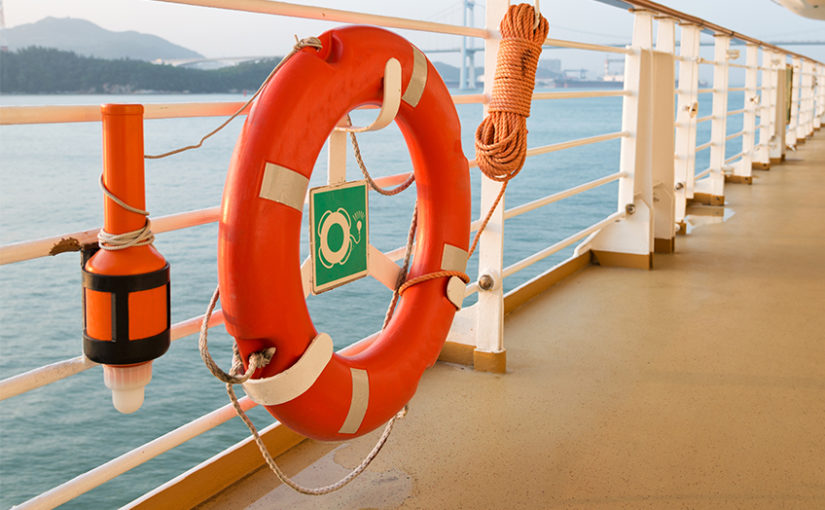
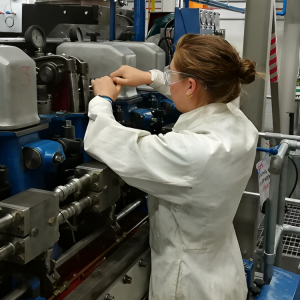
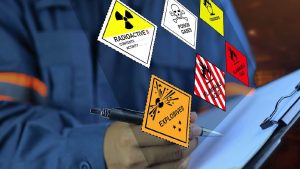
Very comprehensive and good article, Thanks a lot!